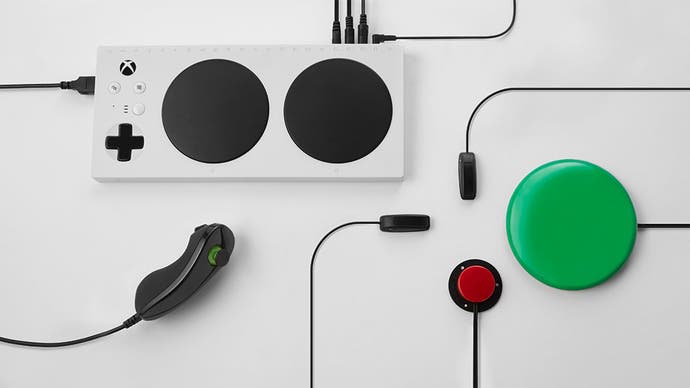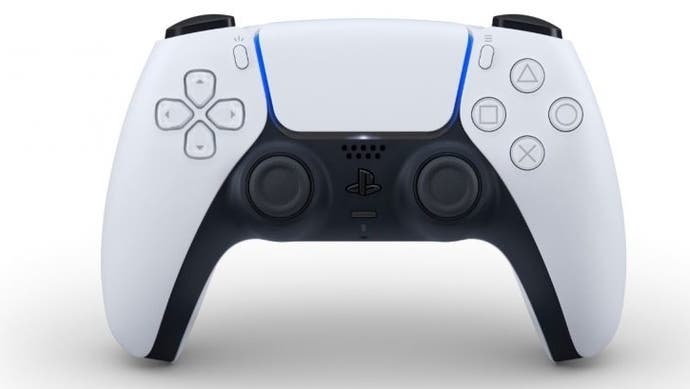What do the new generation's controllers mean for accessibility?
The future is almost here.
It's an exhilarating time to play games. The Xbox Series X and PS5! The next generation of consoles is almost in our hands! It's time to say goodbye to loading screens and hello to fun new possibilities.
New consoles have historically meant new controllers, though. As a disabled gamer with accessibility requirements, the news of a next-generation controller creates fear and uncertainty, and these emotions are echoed by many disabled gamers. I've experienced this fear during the previous generation's move to the Dualshock 4. For a while, I thought my only option was to hang up my gaming gloves. But in fact, that was when I discovered the gaming accessibility community and realised that the gaming industry was working to become more inclusive.
And it has. This generation has given us games with ground-breaking accessibility settings like Gears 5, Shadow of the Tomb Raider and The Last of Us 2. And now, these next-gen consoles will be the first generation where accessibility thinking is truly present from the start, ready for game developers to innovate further.
It makes a difference. I have spent years of effort to create an optimal gaming setup using an adapted PS4 controller. With muscle weakness or mobility issues your hands form into the specific shape of a preferred controller, so granular alterations have significant consequences on muscle function.
In this generation, Xbox has made huge accessibility advances by creating the revolutionary Xbox Adaptive Controller (XAC). To continue supporting accessibility, the Xbox Series X can seamlessly transition your current XAC setup so disabled gamers can play straight out of the box.

Equally, the new Series X controller has been designed to give players a better experience, but Microsoft clearly didn't want to change things just for the sake of change. So, the designers improved on aspects of the current Xbox One controller such as the d-pad, while ensuring the muscle memory players have built up over the years remains intact. Players are not restricted to upgrade to the new Series X controller, and can continue using their existing Xbox One controller too. Basically, your preferred Xbox controller or accessibility setup is the one consistent piece of hardware as an access point to your whole Xbox game library.
The Series X allows backwards compatibility, allowing players to access past games that they have invested money and time in whilst enjoying new releases. However, I wish Xbox would go further by expanding this backwards compatibility to allow compatibility with controllers from other consoles. I can't use Xbox controllers because I don't have enough strength to pull the triggers. It would be beneficial to combine the advanced features of the XAC with your preferred controller.
What about Sony? The Playstation 4 was the first console to implement system-level button remapping, and it led to PlayStation game developers like Naughty Dog upgrading accessibility features. Sony likes to add new technologies to their controllers each generation - the Dualshock 4's touchpad was an unexpected accessibility gem, allowing The Last of Us 2 to add swipe directions as four more remapping inputs. So, hopefully, the PS5 can continue this legacy of breaking new ground for inclusion.
From what I've seen so far, the DualSense PS5 controller has been designed with two new features intended to improve immersion: adaptive triggers and haptic feedback. If I didn't have accessibility requirements, I would welcome the addition of adaptive triggers and haptic feedback without an issue, as I can see the benefits for how games feel. However, with things like this, giving players a choice to adapt and adjust their gaming experience to suit their abilities is vital more than ever.
Haptic feedback provides vibrational dimensionality so that players can feel the force of gameplay actions or sense the direction of enemy attacks. In a PlayStation blog, Brian Horton, the creative director of Spider-Man: Miles Morales, stated that "as you hold down Square to do a Venom Punch, you can feel Spider-Man's bio-electricity crackle across from the left side of the controller, culminating in the right side on impact." These features will have a great accessibility benefit for players without sight! However, for players with muscle weakness, haptic feedback vibrations can be quite uncomfortable. They can impair muscle function and cause fatigue. As a result, I was delighted to learn that accessibility features allow haptic feedback to be adjusted or turned off.
Adaptive triggers were the most concerning new feature on the DualSense controller for disabled gamers. These triggers allow developers to alter trigger tension. My adapted Dualshock 4 has easier-to-press triggers as I find regular tension triggers difficult to press or hold. Thankfully, as with haptic feedback, adaptive triggers are no longer a barrier for accessibility because they can be adjusted or turned off.
Even so, the biggest issue for me is having to swap to the DualSense controller in the first place. I would find it difficult to use because it has a different shape and weight, and the grips are wider. The frustrating issue is that you can still use your Dualshock 4 to play PS4 games on the PS5. Many disabled players would prefer to have the option to use their current controller setup instead of having to spend time and effort starting the process again.
As I write all this, I trust that Sony will have a plan to continue its legacy of breaking new ground for accessibility. After all, accessibility is bigger than the next-generation consoles - it's all-encompassing. The future of games will have to include accessibility, breaking down previous barriers and creating beautiful new worlds ready for exploration.

















.jpg?width=291&height=164&fit=crop&quality=80&format=jpg&auto=webp)
_Rwmp6uD.jpg?width=291&height=164&fit=crop&quality=80&format=jpg&auto=webp)